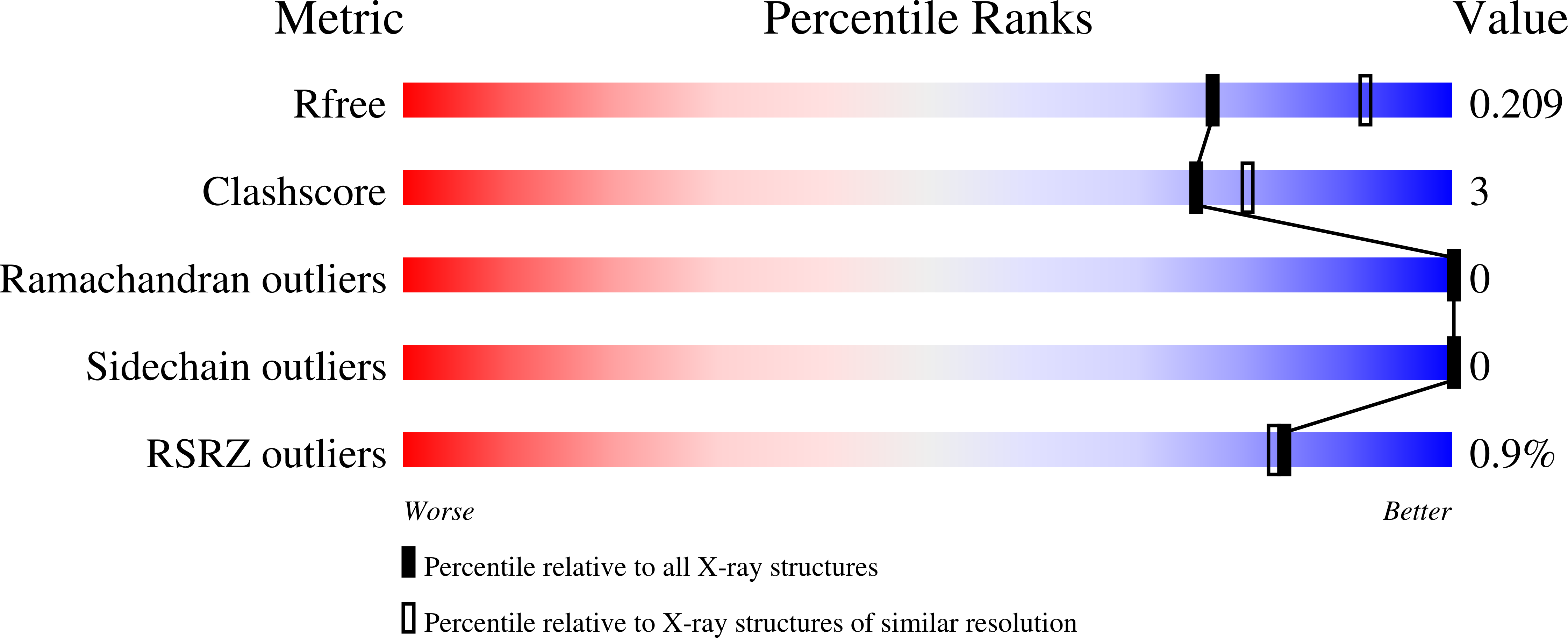Insights into the activation mechanism of human estrogen-related receptor gamma by environmental endocrine disruptors.
Thouennon, E., Delfosse, V., Bailly, R., Blanc, P., Boulahtouf, A., Grimaldi, M., Barducci, A., Bourguet, W., Balaguer, P.(2019) Cell Mol Life Sci 76: 4769-4781
- PubMed: 31127318
- DOI: https://doi.org/10.1007/s00018-019-03129-x
- Primary Citation of Related Structures:
6I61, 6I62, 6I63, 6I64, 6I65, 6I66, 6I67 - PubMed Abstract:
The estrogen-related receptor γ (ERRγ, NR3B3) is a constitutively active nuclear receptor which has been proposed to act as a mediator of the low-dose effects of a number of environmental endocrine-disrupting chemicals (EDCs) such as the xenoestrogen bisphenol-A (BPA). To better characterize the ability of exogenous compounds to bind and activate ERRγ, we used a combination of cell-based, biochemical, structural and computational approaches. A purposely created stable cell line allowed for the determination of the EC50s for over 30 environmental ERRγ ligands, including previously unknown ones. Interestingly, affinity constants (Kds) of the most potent compounds measured by isothermal titration calorimetry were in the 50-500 nM range, in agreement with their receptor activation potencies. Crystallographic analysis of the interaction between the ERRγ ligand-binding domain (LBD) and compounds of the bisphenol, alkylphenol and naphthol families revealed a partially shared binding mode and minimal alterations of the receptor conformation upon ligand binding. Further biophysical characterizations coupled to molecular dynamics simulations suggested a mechanism through which ERRγ ligands would exhibit their agonistic properties by preserving the transcriptionally active form of the receptor while rigidifying some loop regions with associated functions. This unique mechanism contrasts with the classical one involving a ligand-induced repositioning and stabilization of the C-terminal activation helix H12.
Organizational Affiliation:
Institut de Recherche en Cancérologie de Montpellier (IRCM), Inserm, Univ Montpellier, ICM, Montpellier, France.



















